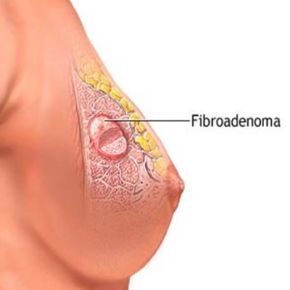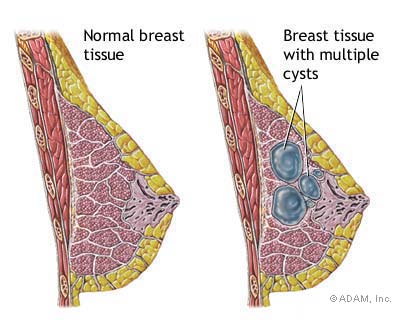
If you are experiencing fibrocystic breast symptoms, this can be quite confusing to understand. Fibrocysts are common in women, but some women do have them even without symptoms. However, if you find yourself suddenly experiencing large amounts of pain, tenderness, swelling, or any other symptom that could be associated with fibrocystic, you should consult a medical professional immediately. Here are some signs that might indicate the presence of fibrocystic:
The pain or tenderness in your breasts could be a sign of pregnancy, if you are having an irregular menstrual cycle. Breast changes, like spotting, may occur in the early stages of pregnancy. The spotting will eventually fade away. There are no specific tests that can be done to identify fibrocysts during pregnancy, though. It is a common symptom for many women.
Some women who have had mastectomies or have had their breasts removed might experience a change in the size or shape of their breasts. Changes that have occurred to some women after mastectomy are often similar to the symptoms of fibrocystic. Women who have had the surgery for cancer or other diseases that affect the breast can also experience some of these symptoms. They are more likely to develop cysts if they have had these conditions, since it will weaken the body's natural defenses against them.
Often times, your skin will be too sensitive to touch when your breasts are swollen and painful in the middle. This often causes discomfort for women who wear bras. This is another common symptom of fibrocysts, although you don't need to have large breasts to feel the effects of this sensitivity.
Tender or swollen breasts can also be the result of tumors. You should see your doctor as soon as possible if you notice any signs of breast cancer or fibrocystic disease in your breast.
Some studies have shown that women with breast cancer are more likely to get fibrocysts than women with healthy breasts. This is because cancer cells often grow in areas that have fat deposits. Fat deposits in the breasts are more common in women with cancerous tumors than in the rest of their body.

A number of other factors can cause fibroids to grow in the breast
These include hormonal changes, menopause, pregnancy, obesity, birth control pills, and weight gain, among others. It is important to discuss any of these factors with your doctor, especially if you have recently been diagnosed with fibrocystic breast symptoms. Your doctor can help you determine the best course of action for each situation, including surgery.
It is very important to talk to your doctor about the various things that may be causing the symptoms of fibrocystic disease in your body. It's best to know what the most common symptoms are so you can determine which treatment is best for you. It is also important to know that fibrocysts can be treated without invasive procedures such as mastectomy or surgery.
Fibroid surgery has been proven to treat some of the most common symptoms of this condition. There are other methods of treatment available, however. In addition to surgery, your doctor may prescribe birth control pills or herbal supplements to treat your condition. You should discuss this with your doctor before trying any new treatment.
If you choose to go with the surgery, your doctor might recommend the use of breast implants, or a silicone implant in a bra. If you are considering breast implants, you should consult with a plastic surgeon to discuss the benefits and risks. Some women have experienced some serious complications with breast implants. They may cause scarring, pain and loss of shape, even if you follow the implant placement instructions carefully.
Your doctor might also suggest surgery and other treatments if the cyst doesn't improve on its own. Surgery for fibrocystic breast will usually be the last resort if you haven't improved your symptoms and still have cysts after two months.
It's always important to talk to your doctor if you think you are suffering from any of the most common symptoms of fibrocystic breast. The sooner you do so, the better chance you have of avoiding serious complications.